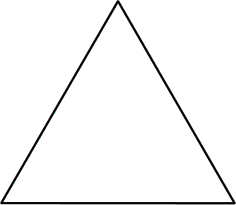25 MAY 2015 by ideonexus
 Laura Betzig: Culture
Laura Betzig: Culture
What if the 100,000-odd year-old evidence of human social life—from the arrowheads in South Africa, to the Venus figurines at Dordogne—is the effect of nothing, more or less, but our efforts to become parents? What if the 10,000-odd year-old record of civilization—from the tax accounts at temples in the Near East, to the inscription on a bronze statue in New York Harbor—is the product of nothing, more or less, but our struggle for genetic representation in future generations?
[...]
...22 FEB 2014 by ideonexus
 Nature Doesn't Need Our Help to Destroy the Earth
Nature Doesn't Need Our Help to Destroy the Earth
For me, the most paralyzing news was that Nature was no conservationist. It needed no help from us in taking the planet apart and putting it back together some different way, not necessarily improving it from the viewpoint of living things. It set fire to forests with lightning bolts. It paved vast tracts of arable land with lava, which could no more support life than big-city parking lots. It had in the past sent glaciers down from the North Pole to grind up major portions of Asia, Europe, a...Folksonomies: nature environmentalism
Folksonomies: nature environmentalism
Observation by Kurt Vonnegut that nature does a fine job of making the Earth uninhabitable regularly on its own.
31 MAY 2012 by ideonexus
 The Impossibility of Continental Drift
The Impossibility of Continental Drift
Even more difficult to explain, than the breaking-up of a single mass into fragments, and the drifting apart of these blocks to form the foundations of the present-day continents, is the explanation of the original production of the single mass, or PANGAEA, by the concentration of the former holosphere of granitic sial into a hemisphere of compressed and crushed gneisses and schists. Creep and the effects of compression, due to shrinking or other causes, have been appealed to but this is hard...It does sound crazy on the face of it.
15 JUN 2011 by ideonexus
 French Encyclopedists Disparage Wildlife in the New World
French Encyclopedists Disparage Wildlife in the New World
We formerly remarked, as a singular phaenomenon, that the animals in the southern provinces of the New Continent, are small in proportion to those in the warm regions of the Old. There is no comparison between the size of the elephant, the rhinoceros, the hippopotamus, the camelopard, the camel, the lion, the tiger, &c. and the tapir, the cabiai, the ant-eater, the lama, the puma, the jaguar, &c. which are the largest quadrupeds of the New World: The former are four, six, eight, and...Buffon states that mammals of North America are smaller and its Native Americans less developed than European life, owing to the continent's lack of resources and cold climate. Reptiles and insects thrive, however.




